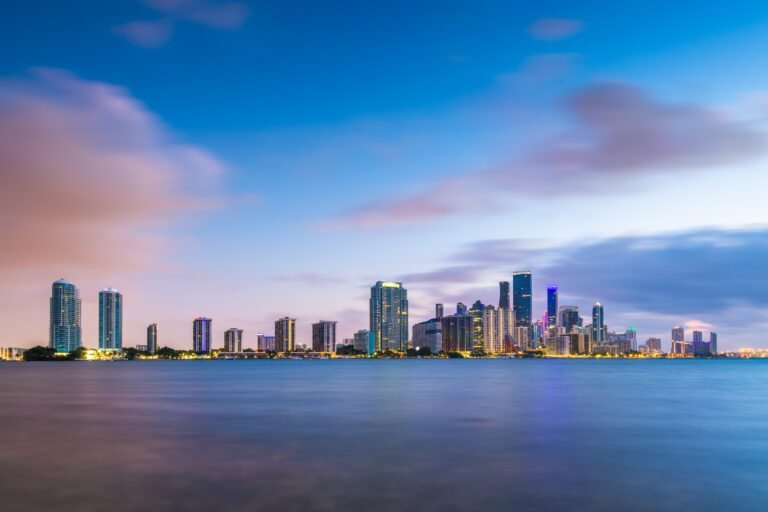In Miami, a great meal often begins before the first bite. The city’s best restaurants act like design galleries with edible exhibits, and that’s precisely what makes eating here feel like travel within travel.
Design is part of the Miami hospitality infrastructure. Neighborhoods curate the whole experience, so that patio with the terrazzo underfoot and bougainvillea wrapped around steel columns is part of the flavor profile.
It’s also a people story. For locals testing the waters of the scene, part-time fine dining server jobs in Miami are a front-row seat to how décor and lighting knit the service together into a night guests talk about for years.
Quick Neighborhood Map
Start in the Miami Design District, where dining is intentionally braided into fashion, public art, and architecture. You feel it as you move from plaza to dining room with the continuity of materials and sightlines making dinner feel like a walking exhibit with a tasting menu tucked inside.
The district bills itself as a creative neighborhood dedicated to fashion, art, architecture, and dining, which is exactly how the area reads when you’re there.
Swing over to the Wynwood district when you want a more kinetic vibe. There are murals as far as you can see, music spilling into alleys, and rooms that lean industrial but still manage intimacy through plants and warm light.
South Beach brings the classic set piece with Art Deco bones and an ocean breeze, but the takeaway is the same across all three: in Miami, the neighborhood sets the thesis and the restaurant writes the proof.
Miami’s rise in the MICHELIN Guide crystallized that the city’s best rooms care as much about aesthetics as they do acidity.
The current roster spans multi-sensory tasting rooms and modern bistros that feel like they were storyboarded by architects first, chefs second. Having stars in the city legitimizes the “design is part of the flavor” idea for visitors who might still think Miami is only neon and nightclubs.
How Design Actually Changes Taste
The way a dish looks and the context around it can literally change how it tastes to you. Peer-reviewed research in a real restaurant setting has shown that the color of the plate can alter gustatory and hedonic perception, so the same dessert is rated differently on white versus black plates. In other words, plating is part of the recipe.
There’s also literature to suggest that design variables in the room, like light levels, materials, and even how sound is absorbed, nudge your brain’s “this tastes great” switch. Brighter light can intensify perceived flavors, while warm light and wood surfaces often make spaces feel “sweeter” and more relaxed.
Mini Field Guide to Reading the Room
- Scan the sightlines. If you can trace a visual path from entry to kitchen pass without distractions, you’re in a room that knows how to steer attention.
- Check the material palette. Stone + metal signal crispness; wood + fabric cue warmth. Many of Miami’s most memorable rooms mix both to balance energy.
- Watch the plateware. High contrast tends to make food pop (and sometimes “taste” brighter), while matte ceramics can make comfort dishes feel even cozier.
Use this as a heuristic, not a rulebook. The goal is noticing how design is editing your experience in real time.
Practical Tips for Your Own Design-Driven Food Crawl
Keep it small and intentional by picking two neighborhoods and one anchor reservation per night. Leave space between stops for a stroll or a coffee at a café with a view. Your brain needs the intermission to “reset” and make the next course feel new.
If you’re chasing the city’s buzziest tables, snag earlier or later seatings. Design-forward rooms often feel best when you can hear the room breathe.
Ask your server about the choice of plateware and the artwork. In Miami, staff are usually proud of these details, and this is the best way to keep the “memorable experience” truly stored in your long-term memory.
You’ll also glean how operations adapt the space as a living thing in how music nudges tempo as the night hits its stride, how shade structures make patios workable in sticky months, and how a simple candle on a table changes the story of a dish.
Miami’s dining scene is proof that design is essential. The best rooms remove friction and give the food a frame that makes it land harder. If you plan your meals with the same care you plan your museum visits, you’ll leave with a reel of experiences that feel curated because they are.


































